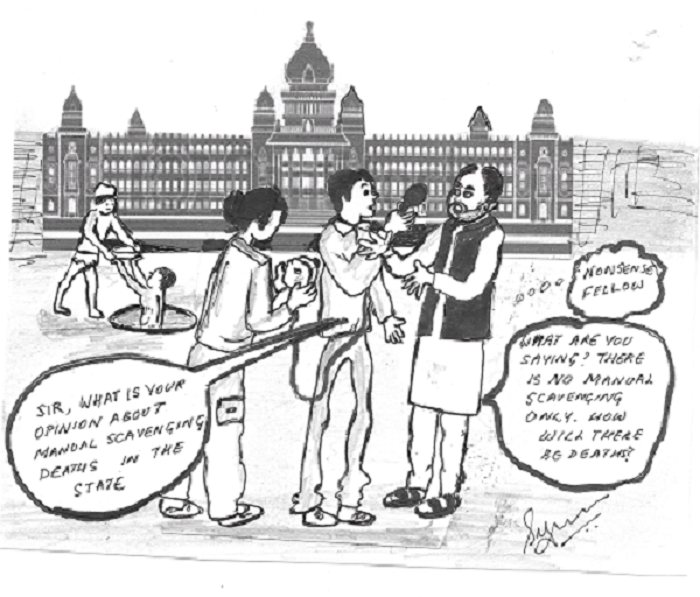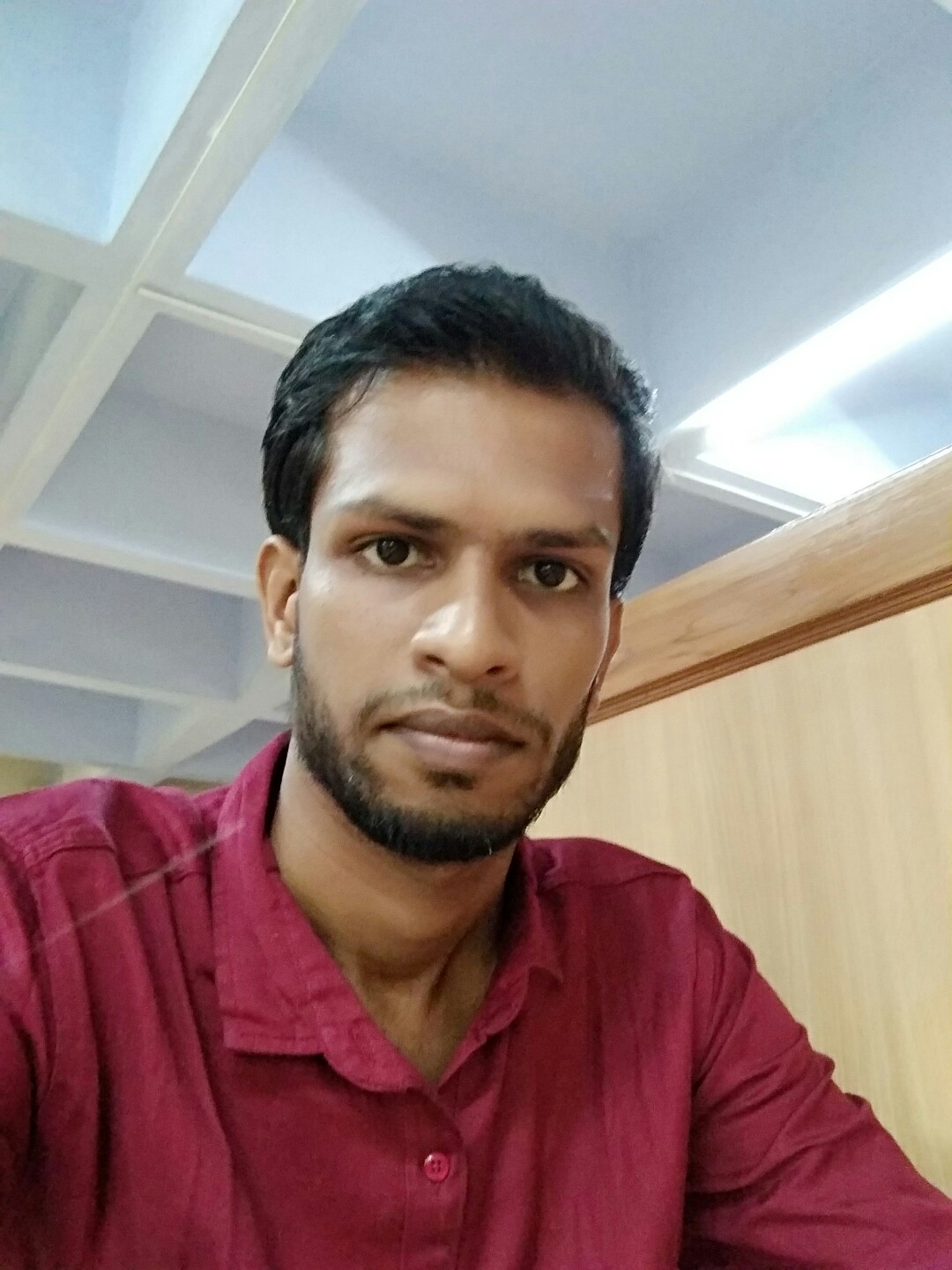Karthick RM
“Hence the major effect of the Panopticon: to induce in the inmate a state of conscious and permanent visibility that assures the automatic functioning of power.”
-Michel Foucault
“What is a village but a sink of localism, a den of ignorance, narrow-mindedness and communalism?”
-BR Ambedkar
From the time when reports of social media accounts being monitored by states emerged to the introduction of the Aadhaar card in India, there has been considerable debate on the intrusion of privacy of individuals by governments and corporates. Of course, it does seem paradoxical how several progressives were complaining about internet monitoring – on their Facebook and Twitter profiles. The more intellectual among them, especially those who have had an unhealthy dose of postmodern cynicism, blame it as an inevitable effect of modernity. Explicitly in some cases, implicitly in others, we can see nostalgia for the simple, harmonious, organic community of the village…
Romanticization of the village is not new in India. Several nationalist thinkers, ecologists, Marxists, and postcolonialists, to name a few, have contributed to the construction of the village as an ideal and idyllic society. Readers of Ambedkar would also be familiar with his rigorous critique of the idea of the village. I look at the village not just as a sink of localism, but also as an effective ‘organic’ mechanism of surveillance, as or more efficient than any modern system, reflecting on an important recent Tamil novella.
Pethavan was written by Imayam, the pen name of V Annamalai, an important figure in contemporary Tamil literature. Though many of his novels deal with Dalit life in the Tamil world, he refuses to be categorized as a Dalit writer. Pethavan, which won critical acclaim in Tamil circles, was also translated into English and published by Oxford in 2016. Originally published in Tamil by Bharathi Puthagalayam in February 2013, this novella also created a tremor because of the similarities with the Divya-Ilavarasan story.
Bhakiyam falls in love with a Dalit boy during her college days in Vridhachalam. Their love is thoroughly opposed by her family and members of her caste community in her hometown, a small village in the Cuddalore district. Given the location of the story and several other markers within it, one can legitimately assume that her caste is Vanniyar. Her family and those in her village clearly belong to an economically low-income group. Yet, caste affinity and pride binds them like a vice. And even though Bhakiyam’s lover gets a job as a sub-inspector that does not in any way elevate him in the eyes of the men and women of her village. He and his parents are trashed, his house ransacked, and properties looted.
Measures are used to cow down Bhakiyam too. Her hair is cut short, and in one occasion, young men of her village surround her and expose themselves, taunting her. Her family watches this with shame and horror, blaming Bhakiyam for bringing this upon them. Imayam brilliantly captures the immanent cruelty and violence of the village in very casual instances and statements. For instance, how a young woman with her infant on her hips, advices Bhakiyam’s parents to force feed her insecticide and lock her up in a room, depriving her of water, so that death will be quick. Imayam does not exaggerate horror. He shows the village and the village mentality as it is; that is horrifying in itself.
Pazhani, Bhakiyam’s father, is conflicted. His family cannot live in the village if Bhakiyam lived. He considers killing her but he is unable to bring himself to it. His wife consents to it, but his mother objects, concerned for her son’s soul. Even though Bhakiyam agrees to give up on her love for the sake of her family, Pazhani knows that there is no easy way out of this, as the village was set on making an example of her. In all likelihood, the village would decide to handle Bhakiyam should he delay in acting. His daughter would be killed, or maybe even gang-raped before being killed, in order to teach other transgressors a lesson. The village needed a blood sacrifice. A sacrifice that only a father, the Pethavan, can make. Fatherly love trumps caste pride and he lets her escape with her lover and kills himself, as a profoundly humane act to satisfy the bloodlust of an inhuman society.
Besides the poignant human drama that Pethavan captures, it is also an account of how efficient surveillance is in the village. The terror that Pazhani feels for his family is because he knows that there is no hiding because plainly, there is no place to hide. In the information technology age, the villager might be a stranger to technology, but none knows like him to gather and spread information. But without all that technology, the village here still manages to effectively monitor the movements of its constituents, what they do, who they talk to, what bus they boarded, what tea-shop they visited and so on. Just consider Thulasi, Pazhani’s aged mother who rarely leaves the house, being up-to-date on who is having an affair with who – describing other ‘illicit’ relationships in the village, she laments why Bhakiyam stepping outside caste alone warrants such introspection and punishment.
Imayam records the chillingly precise manner in which the villagers track the movements of Bhakiyam and restrict her. Privacy of the individual, or the rights of the individual, are something alien to the village. Believing itself to be a body, the village also takes on the right to amputate that part of the body that it feels is going awry. The village does not endorse caste transgressions not because it will not, but because it cannot. Its political economy and psyche are rooted in the graded hierarchy. Flight or death are the only modes of escape from its surveillance, and these are the two options that Imayam’s characters choose from. The simple village offers simple choices to its subjects. If anything, decentralized premodernity is far more dehumanizing than urban modernity.
Even if tapping social media accounts, or something like Aadhaar, became a universal practice of states, it would still be largely meaningless. A centralized power, one relying on pure data, just cannot process so much information, most of which is thoroughly meaningless. At least with the state, democratic activists can push for a regulating of the monitoring process. The village on the other hand functions on a far more decisive basis, because it knows clearly which information to filter out and act upon. Thus, its ability to dole out punishments to transgressors.The terror of the ever-watching Big Brother is a lazy liberal myth. The mamas, athais, akkas and machans of the decentralized village are the ones who are more terrifying monitors.
The author would like to thank Vilasini R for her critical insights that made this article possible.
~~~
Karthick RM is faculty at the Centre for Studies in Social Sciences, Calcutta.









